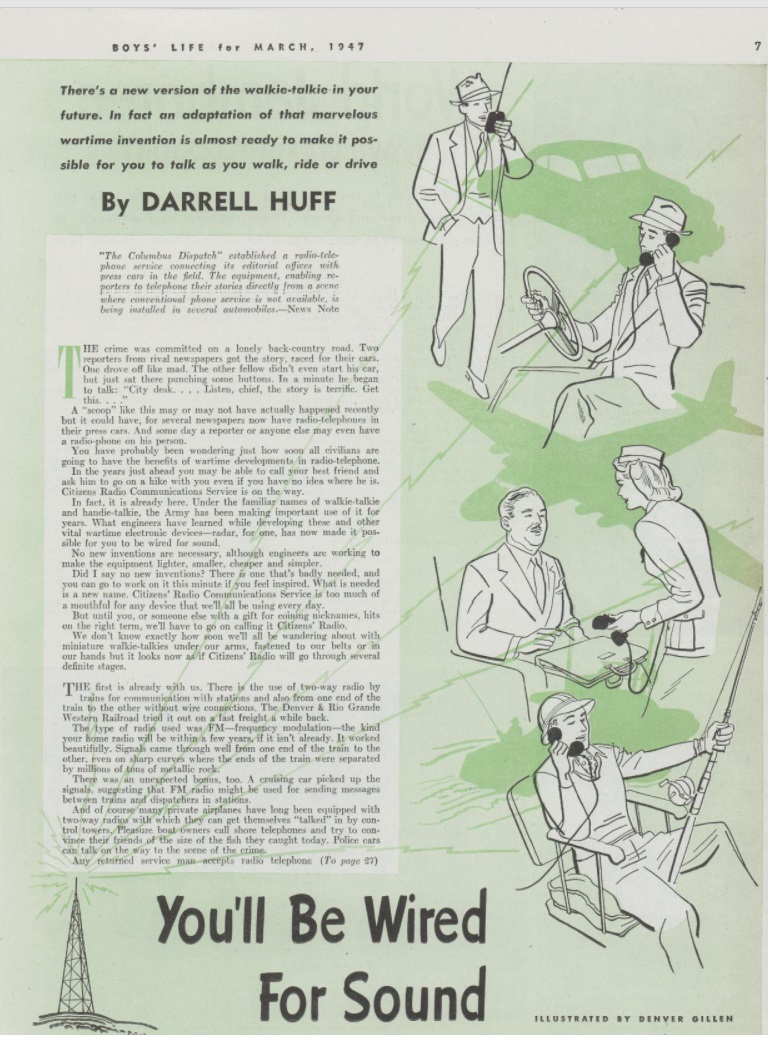 Seventy-five years ago this month, the March 1947 issue of Boys’ Life offered scouts some predictions about what wireless communications might look like in the future. The words “handi-talkie” and “walkie-talkie” had entered the lexicon, thanks to military use of portable transceivers, and the magazine predicted that civilians would soon be enjoying their widespread use.
Seventy-five years ago this month, the March 1947 issue of Boys’ Life offered scouts some predictions about what wireless communications might look like in the future. The words “handi-talkie” and “walkie-talkie” had entered the lexicon, thanks to military use of portable transceivers, and the magazine predicted that civilians would soon be enjoying their widespread use.
It starts by noting how a radio-equipped newspaper reporter could easily scoop the other papers, but the equipment was getting lighter, smaller, cheaper, and simpler, and the magazine predicted that use would be widespread.
The FCC had already authorized the citizens’ radio service on UHF, and the magazine noted that the FCC had allocated a full “10,000 kilocycles” of spectrum to the service.
The magazine hinted that a link to the telephone network wasn’t far off, and you would soon be able to “make, or receive, phone calls from your family car as you drive along.” You could even call another car!
The magazine did get some things right:
As the things come into common use, there will be a field day for cartoonists and gag writers. All kinds of funny new situations will arise when all of us begin to walk around, carrying on phone conversations as we go.
But, funny or not, the day is bound to come. As someone once remarked, ‘the world do move.’
And they got one more thing mostly right:
Taking one hand off the wheel might constitute a traffic hazard, so there is room for improvement in the equipment. Perhaps our engineers will soon be able to give us a radio telephone that works like a radio microphone and loud speaker. Then the motorist would be able to carry on his conversation simply by touching a button with his left foot, leaving both hands on the wheel. Automatic transmissions are foot eliminating clutches anyway, so the driver’s left foot will be free to take on a new job beside that of just dimming the lights.
